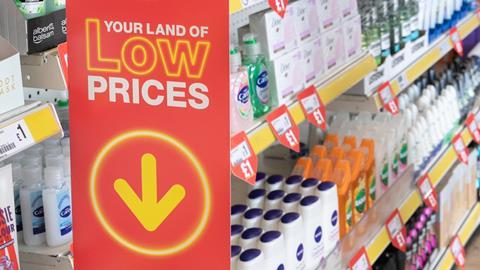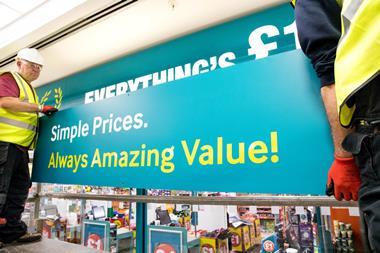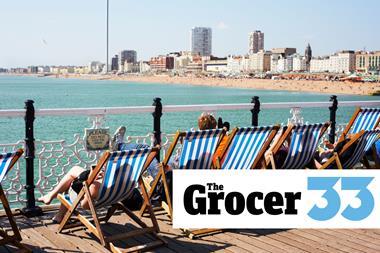As financially squeezed shoppers switch from traditional supermarkets to Lidl and Aldi in their droves, it’s been an ideal opportunity for variety discounters to take some share too.
Certainly, Poundland has aimed to do so. “Poundland is sending a clear message to Brits managing soaring inflation – the discount store has never been a stronger alternative to the supermarkets,” the retailer said in September.
And there are a number of reasons why it ought to be able to, some of which were highlighted in a trading update from its parent Pepco this morning. Here are four key things working in its favour:
1. Store updates
In its update, Pepco highlighted it is looking to “to drive a better business through store and proposition renewals”.
In the UK, a key part of Poundland’s evolution has been the rollout of frozen and chilled food to hundreds of stores, enabled by its acquisition of Fultons Foods in 2020. It was due to be in 350 branches by this autumn, as part of a store makeover programme that Poundland calls Project Diamond.
That means it will be in nearly half of Poundland’s UK estate, while the made-over stores also benefit from Pep&Co clothing & home ranges.
2. Pound price points
At a time when value has become the top priority for many shoppers, Poundland has also wisely tapped into its pound shop roots, even if that has meant backtracking on a long-standing transition to multi-pricing.
At a store opening in February, Poundland told The Grocer about the half the range cost over £1, ranging right up to £150 for an egg chair. Then in June, the retailer ‘reset’ prices in light of rising inflation, to promise about 60% of lines would cost £1 or under.
In September it went further and doubled the number of products costing £1, including new lines of Cadbury Dairy Milk, Gillette shave foam, Domestos bleach and Toilet Duck.
“And unlike supermarkets, Poundland is focusing on delivering amazing value on single items so customers can avoid tying up household cash in supermarket bulk buys that only bring the lowest prices to those who can afford to buy more,” a spokesman boasted at the time.
The price reset was in response to a 5%-10% rise in weekly footfall accompanied by a decline in basket values. “It’s clear customers are shopping more intentionally and that’s why we’re leaning into our £1 price point,” Poundland MD Barry Williams said in June.
3. Locations
That rise in footfall highlights another possible reason for shoppers to turn to Poundland over supermarkets: location. While it has been busy opening flagship stores in retail parks this year, including a 15,000 sq ft one in Nottingham, it also has many legacy stores in local high streets and retail parades, surrounded by chimney pots.
“As inflation bites, Poundland is seeing changes in the way customers are shopping – using Poundland for more of their weekly shop and taking advantage of the fact its stores are close to home, cutting down on fuel costs,” the retailer said in June.
4. Value messaging
On top of that, Poundland has been driving home its value message loud and clear, with the introduction of a ‘power wall’ of £1 products at store entrances, and new signage saying ‘Your land of low prices’.
“You will see this messaging in all of our stores right now, but we are not going to stop here,” Poundland COO Austin Cooke promised in June. “More lines are being added day by day, demonstrating why we are the place for amazing value every day”.
So is it all working? The trading update looks positive, on the face of it. Poundland increased revenues by 5% to €2.1bn (£1.9bn) in the year ended 30 September, with like-for-like growth of 2.6%.
But there are caveats. One is that the numbers are for Poundland Group, which includes Dealz stores in Spain, Poland and the Republic of Ireland. The other is that grocery price inflation in the UK is running at 13.9%, according to new data from Kantar this week – its highest level since the tracking began in the 2008 financial crash.
Poundland says its own data suggests it is indeed taking spend from the mults.
So why isn’t there more evidence of that? The likely explanation is, while it may be taking spend from traditional supermarkets, variety discounters such as Poundland, B&M and Home Bargains are also losing spend to Lidl and Aldi.




















No comments yet